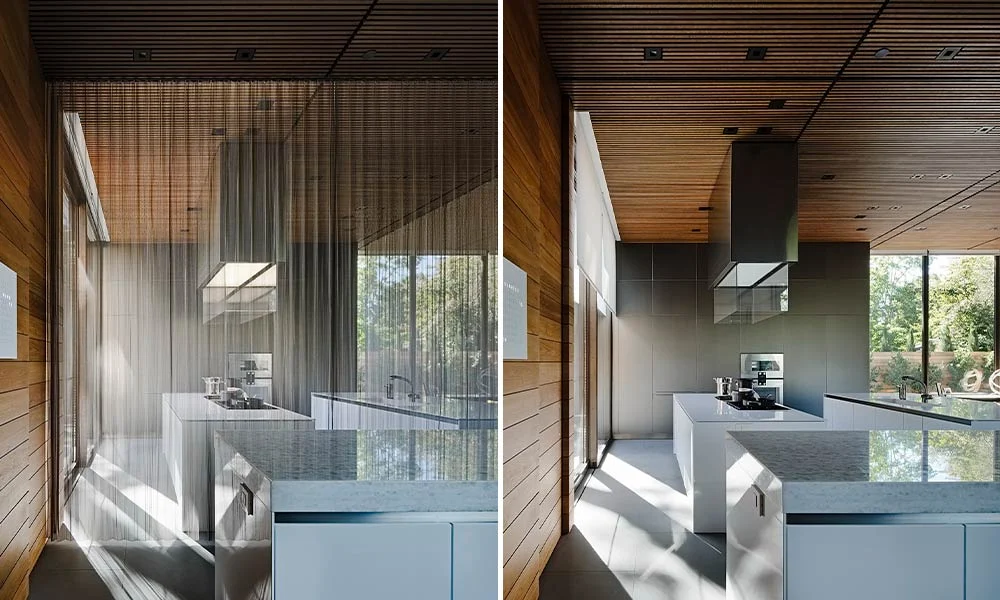Natural light plays a pivotal role in home design, offering more than just aesthetic benefits. It enhances the atmosphere, improves energy efficiency, and positively impacts the well-being of the inhabitants. This article explores how to maximize natural light in your home and the various tips and tricks that can transform your living spaces.
The Importance of Natural Light in Home Design
Natural light is not just about brightening a space; it significantly influences the mood and functionality of a home. Studies have shown that exposure to natural light can improve mood, increase productivity, and even promote better sleep. Moreover, homes that are well-lit by natural light tend to be more energy-efficient, reducing the need for artificial lighting during the day and potentially lowering utility bills.
Incorporating natural light into your home design also creates a sense of openness, making rooms feel larger and more inviting. This is particularly important in smaller homes or apartments where space is at a premium.
How to Maximize Natural Light in Your Home
Achieving the right balance of natural light involves strategic planning and design. Here are some tips to help you maximize the natural light in your home:
Optimize Window Placement and Size
Windows are the primary source of natural light, so their placement and size are crucial. When designing or renovating your home, consider larger windows in rooms where you spend the most time, such as the living room or kitchen. South-facing windows are ideal as they receive the most sunlight throughout the day. If possible, include floor-to-ceiling windows or sliding glass doors to further enhance the flow of light.
Use Light-Reflective Materials
The materials you choose for your home’s interior can significantly impact the amount of natural light that penetrates a space. Light-reflective materials such as glass, mirrors, and glossy surfaces bounce light around the room, making it appear brighter. For example, placing a large mirror opposite a window can double the amount of light in a room. Similarly, glossy finishes on floors, countertops, or tiles can help reflect light.
Incorporate Glass Doors and Partitions
Glass doors and partitions are excellent for allowing light to flow between rooms, especially in spaces where natural light might be limited. These features can be particularly useful in areas like hallways or bathrooms, where traditional windows might not be feasible. Frosted or textured glass can be used for privacy without sacrificing light.
Choose Light Colors for Walls and Ceilings
The color palette of your home plays a vital role in how light is perceived. Light colors, particularly whites and pastels, reflect more light than darker shades. Painting walls and ceilings in light hues will make the room feel more open and bright. If you prefer darker colors, consider using them as accent colors rather than the dominant shade.
Utilize Skylights and Solar Tubes
Skylights are a fantastic way to bring natural light into areas that might not have exterior walls, such as bathrooms or interior hallways. They provide a direct source of sunlight, which can make even the smallest spaces feel airy and bright. Solar tubes are another option for adding natural light to spaces without exterior walls. These tubes capture light from the roof and funnel it down into the home, providing a similar effect to skylights but on a smaller scale.
Trim Outdoor Landscaping
While outdoor plants and trees are beautiful, they can sometimes obstruct natural light from entering your home. Regularly trimming overgrown branches or strategically planting trees and shrubs can ensure that your windows receive maximum sunlight. This is especially important for rooms where light is already limited.

The Benefits of Natural Light in Your Home
Maximizing natural light in your home offers several benefits:
- Energy Efficiency: Reduces the need for artificial lighting, lowering energy bills.
- Improved Well-being: Enhances mood, productivity, and overall mental health.
- Increased Property Value: Homes with abundant natural light are often more desirable in the real estate market.
Conclusion
Incorporating natural light into your home design is a cost-effective and health-promoting strategy that can transform the ambiance and functionality of your living spaces. By optimizing window placement, using reflective materials, and selecting the right colors, you can create a home that is both energy-efficient and filled with light.


